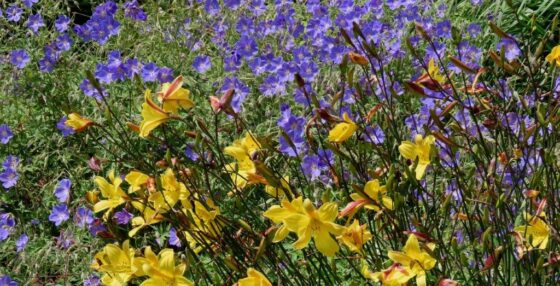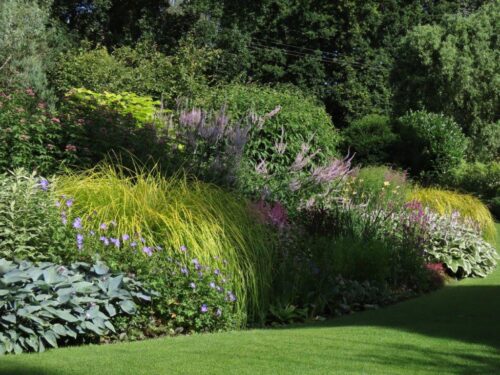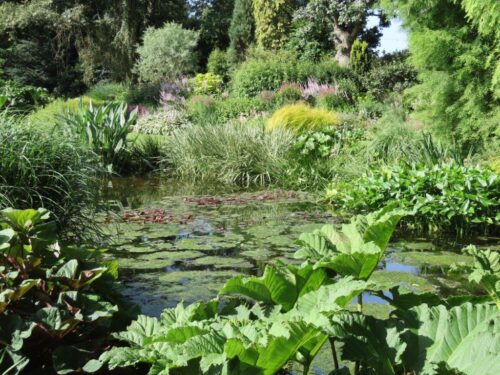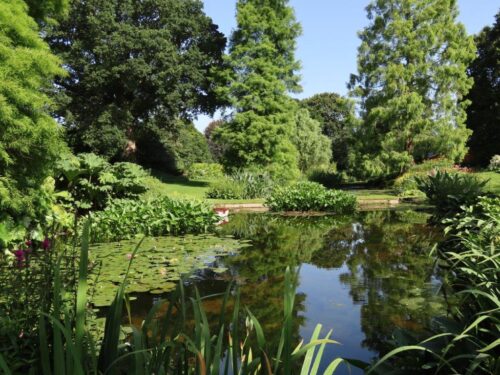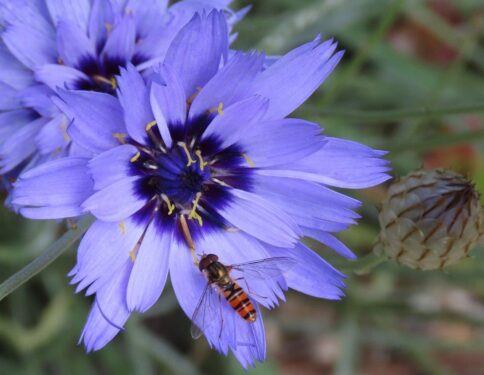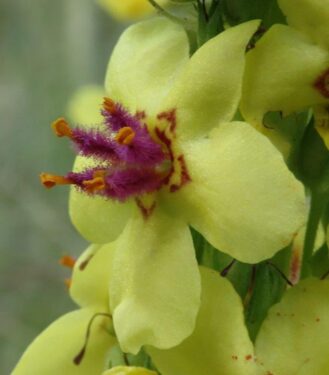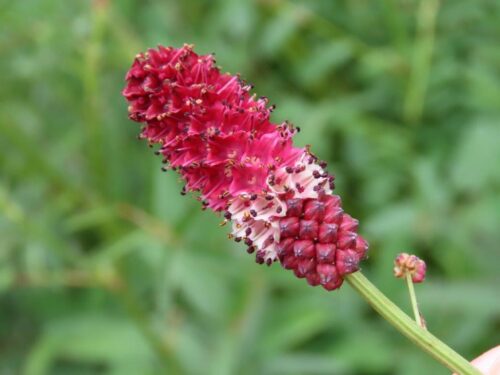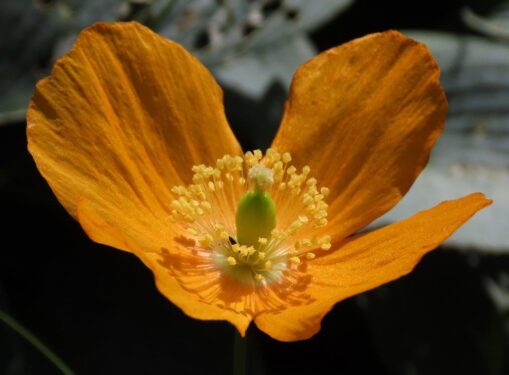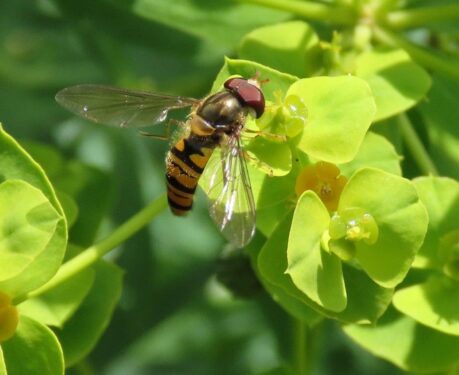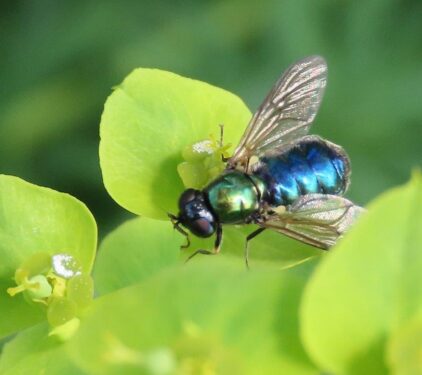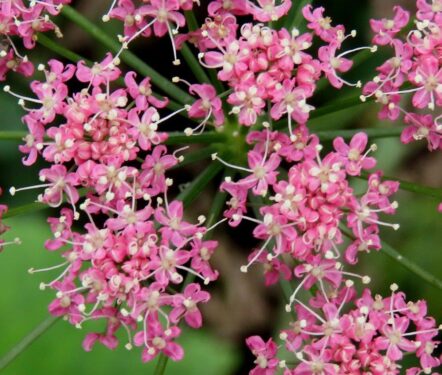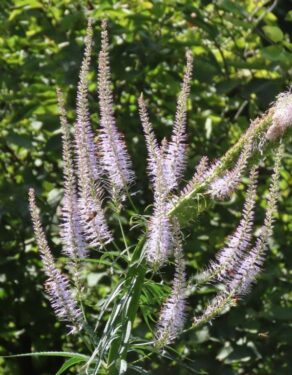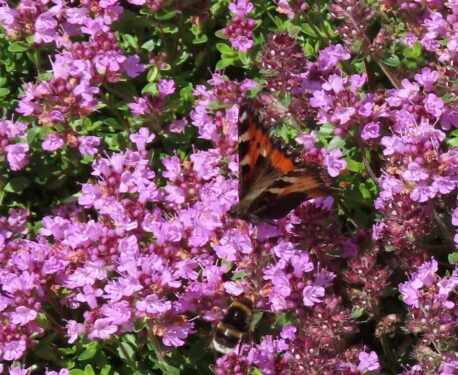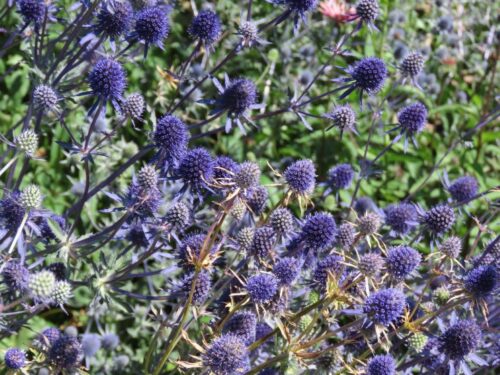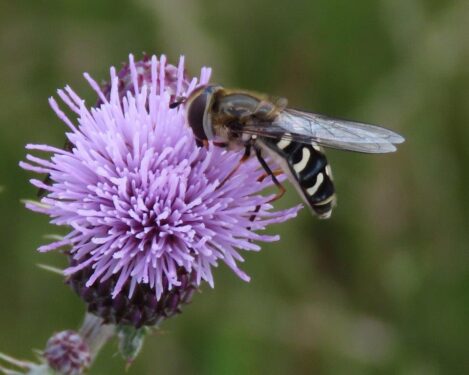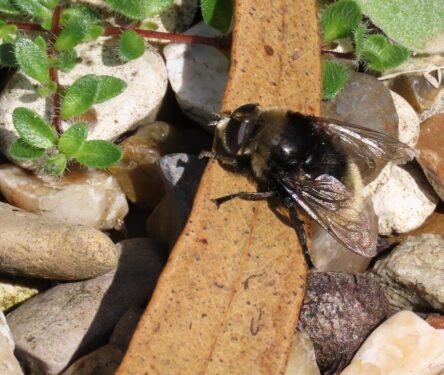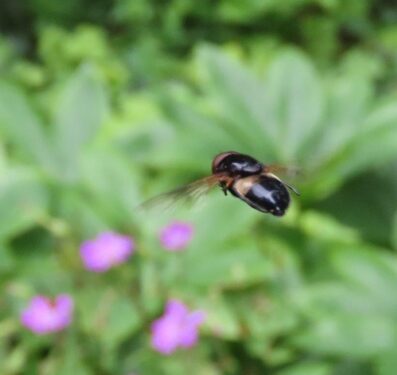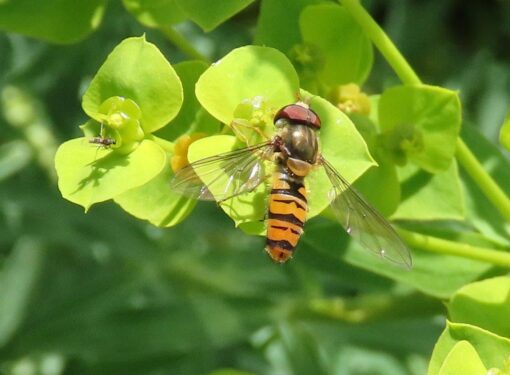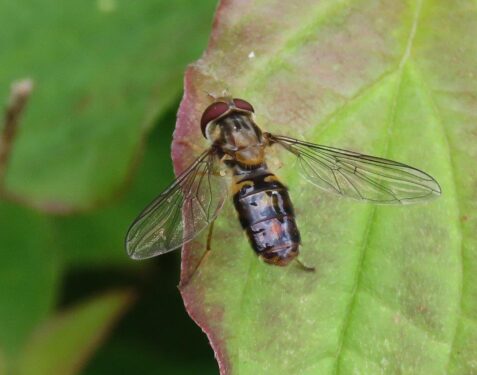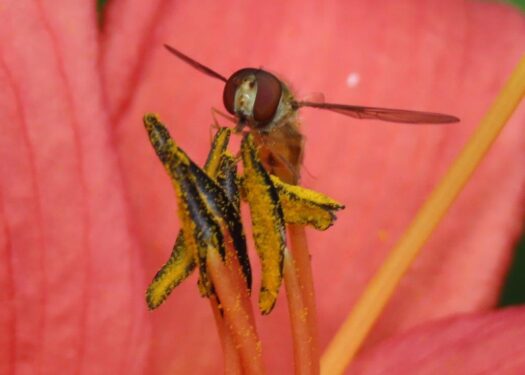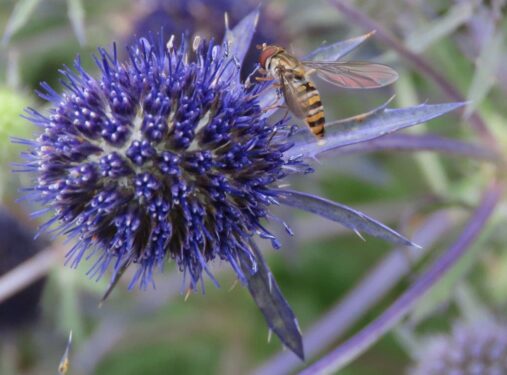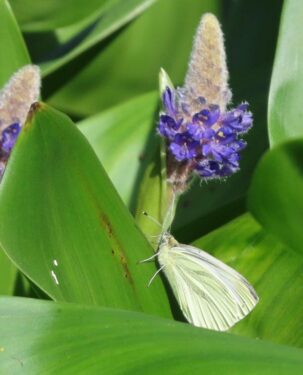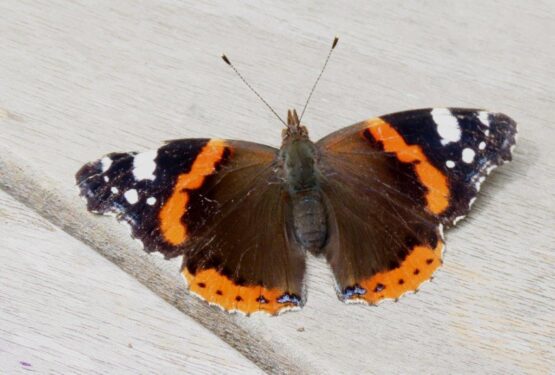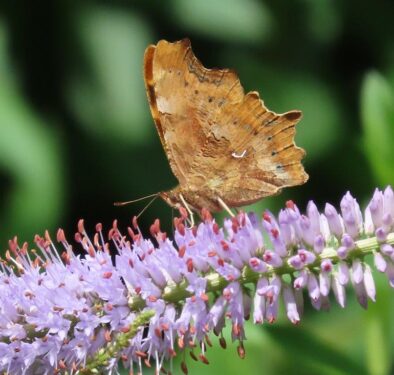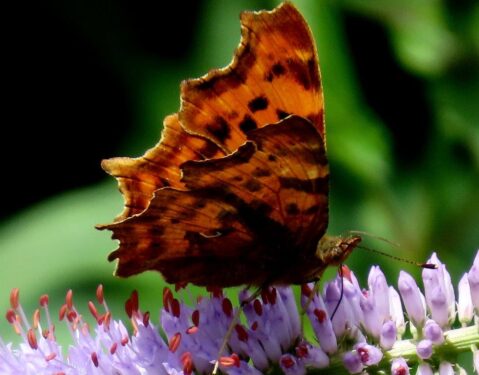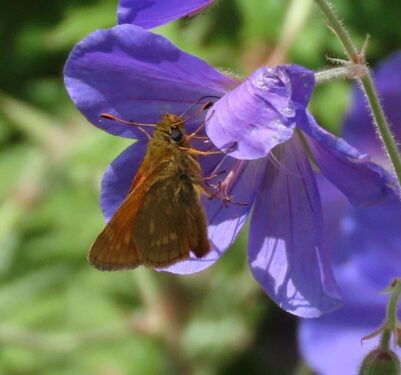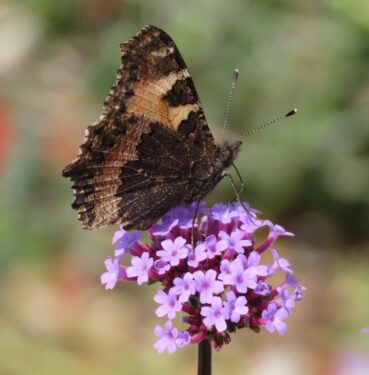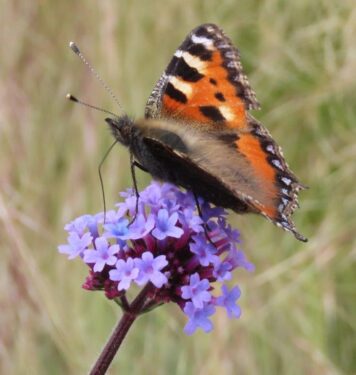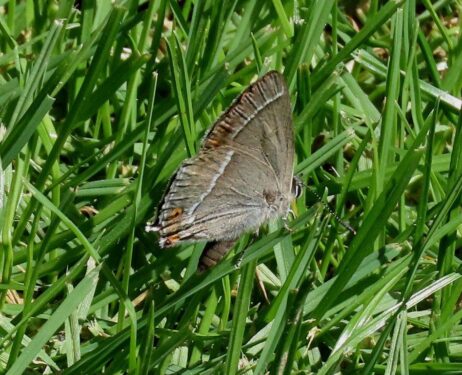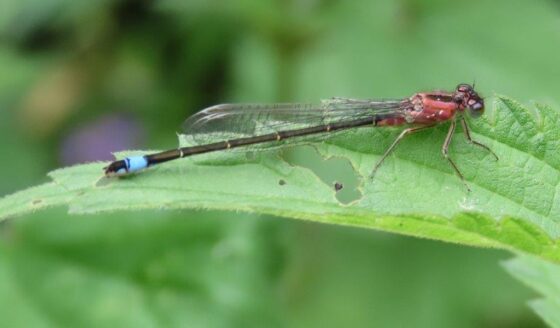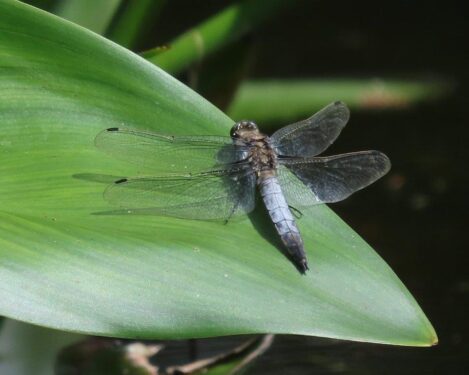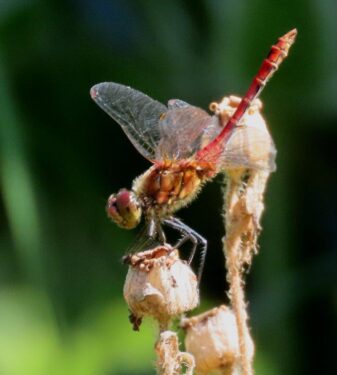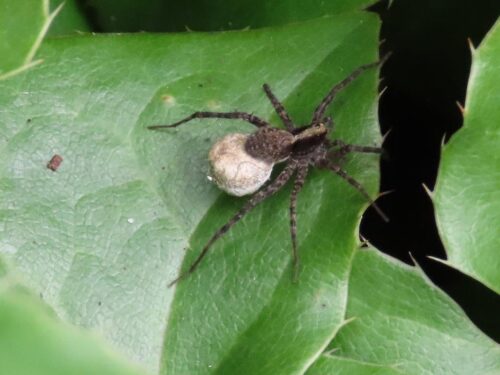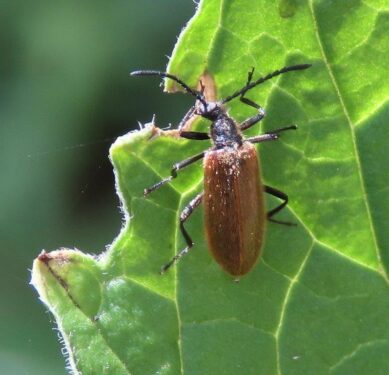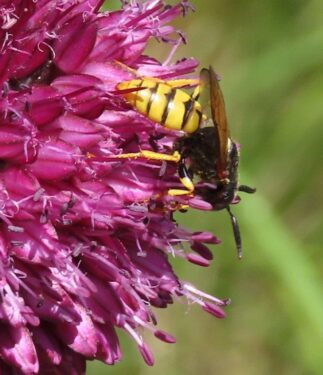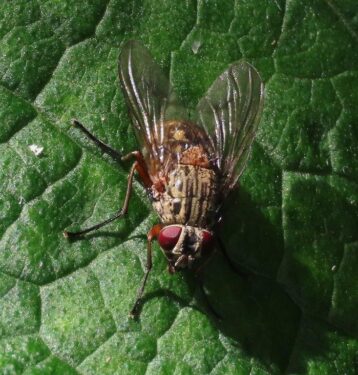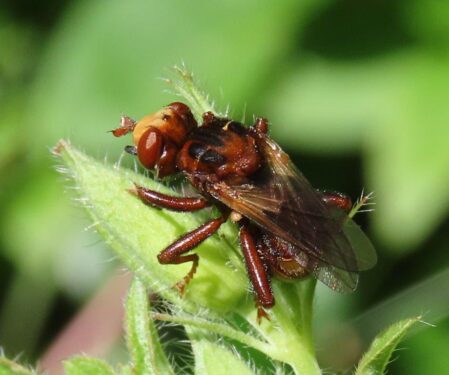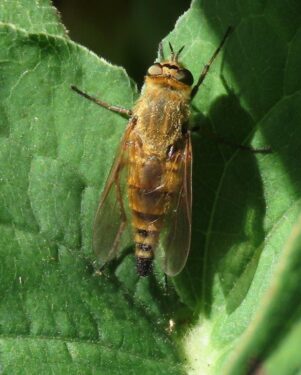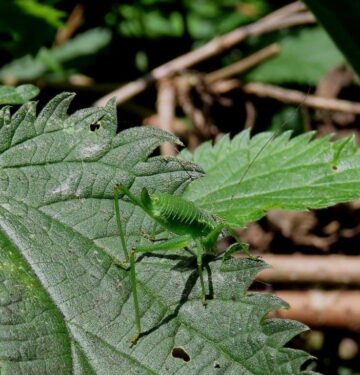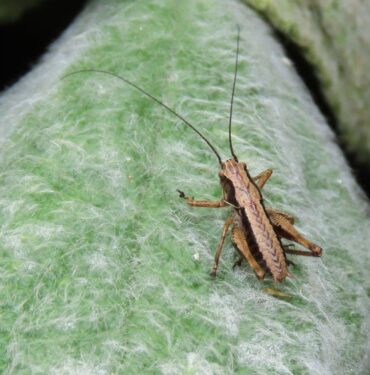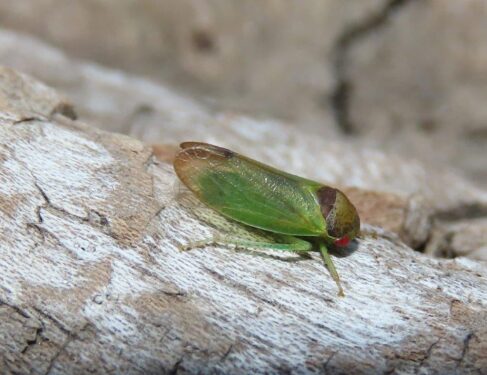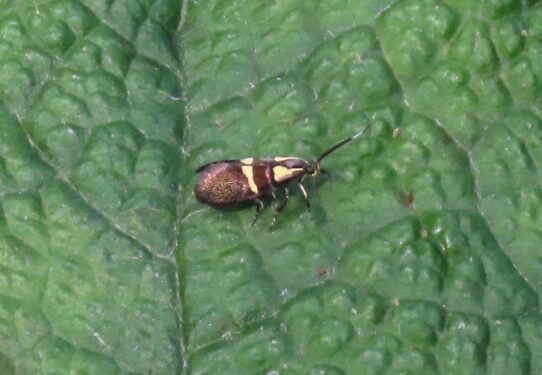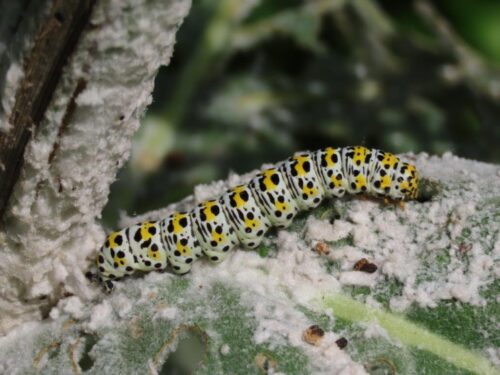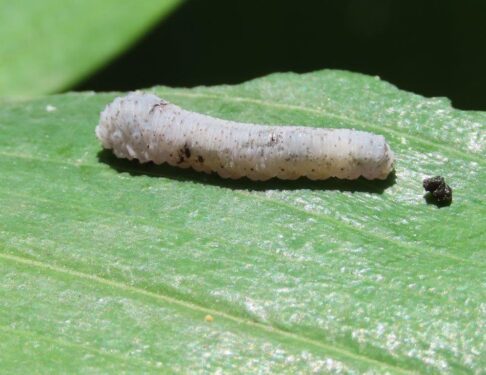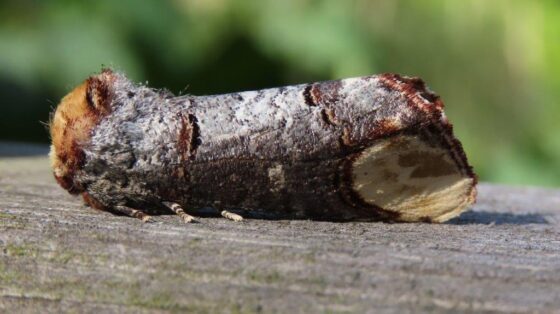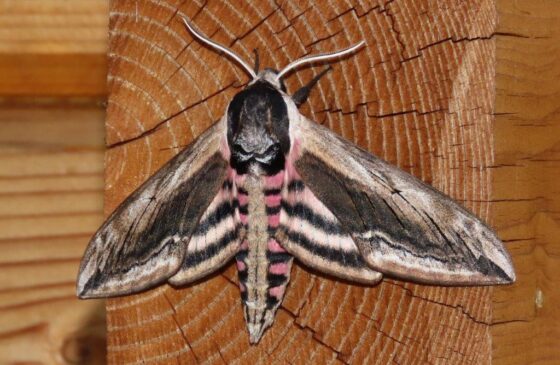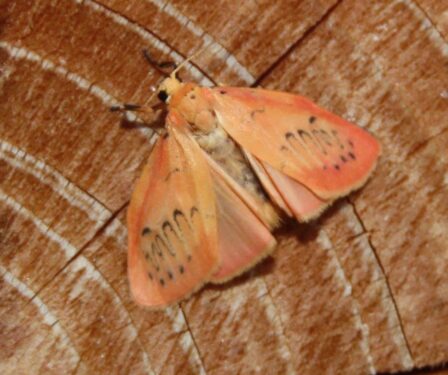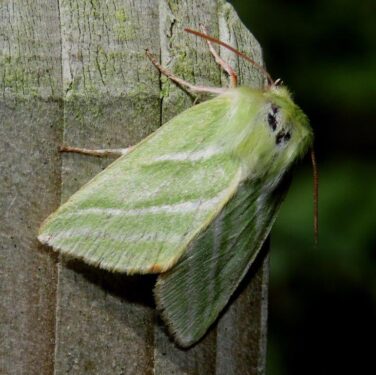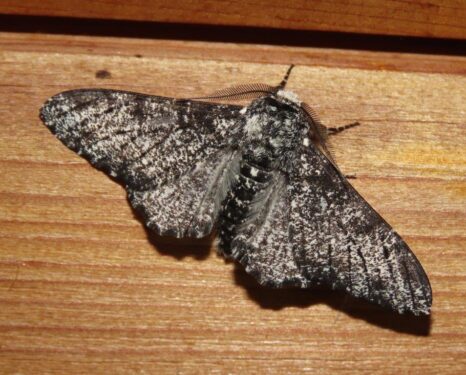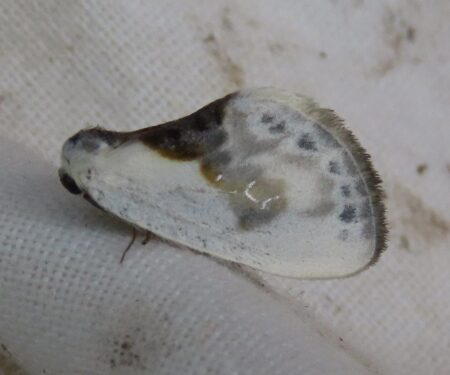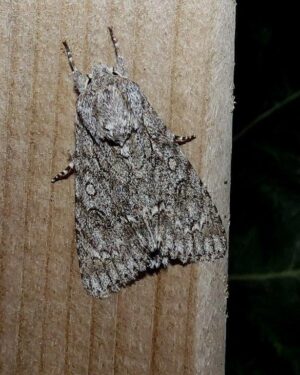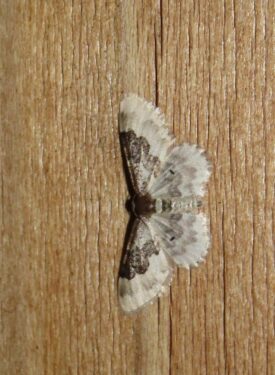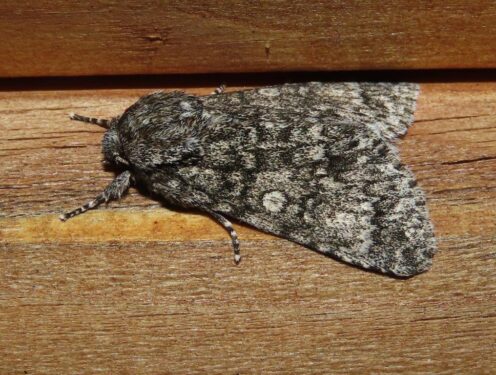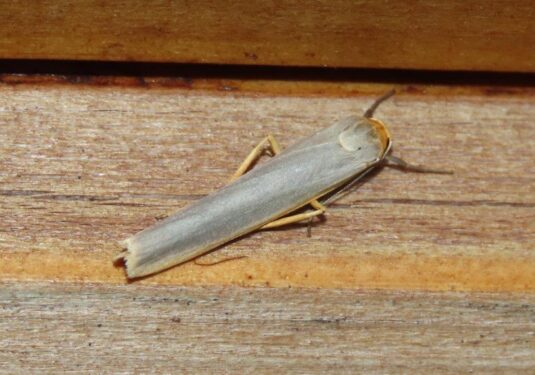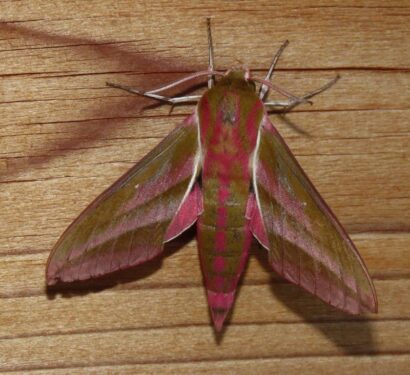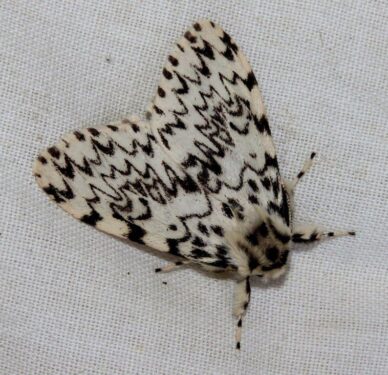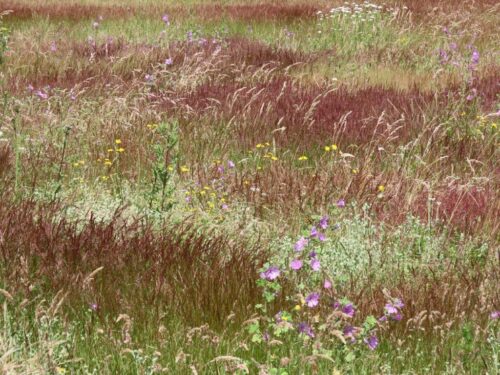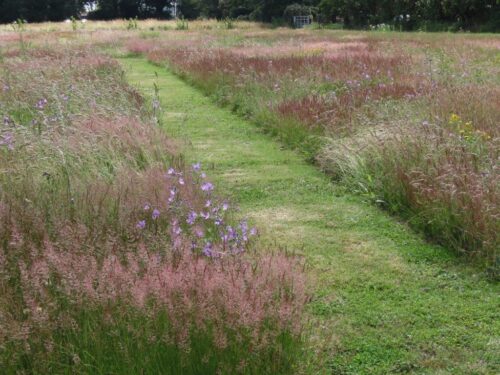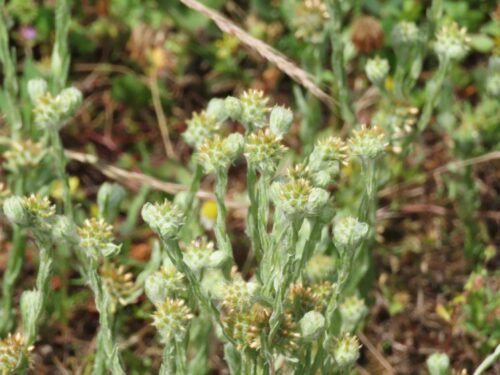At times, July has given us a real summer, albeit with quite some fluctuation, a mix of cooler days and very hot spells averaging towards the norm. The rain of the previous months ensured that the garden remained verdantly lush at a time when in previous drought years parts would have been getting frazzled at the edges.
Star plants for insects in the garden were many and varied, but particular note must be made of Euphorbia, Pimpinella, Veronicastrum, Thymus and Eryngium, all of which were punching well above their weight at some times of the month.
It was especially reassuring to see the emergence (or maybe arrival, following immigration) of hoverflies from mid-month. Part of the army of gardeners’ helpers, feeding for example on aphids, they are a sign of good ecological health, even if Marmalade Hoverflies predominated.
Of the other showy insect groups, butterflies were relatively few and far between, especially early in July, although it was good to see some apparent recovery (from parasite attack) of Small Tortoiseshell numbers, and by the month’s end, a good emergence of Purple Hairstreaks.
In contrast, damselflies were everywhere and abundant, with dragonflies likewise on the warmer days.
But at this time of year, the showy creatures are only the tip of the iceberg. Here’s a selection from throughout the month, ranging from egg-sac-carrying Wolf Spiders to the tiny, beautiful and scarce micro-moth Esperia oliviella.
Among the insects it is always good to see those that might traditionally be considered garden foes, especially those that eat and disfigure the plants we value. Ok, some are more attractive than others (Mullein Moth being much more charismatic than Solomon’s Seal Sawfly for instance), but every one is somebody else’s food, and their presence in the garden is as good a sign as any of the ecologically-centred ethos by which it is managed. I’ll have holes in my Verbascums, just give me the birds and the bees (and moths and sawflies) please…as Joni Mitchell might have sung.
One aspect of garden biodiversity that is often overlooked is moths, the night-fliers in particular. In mid-month however, we were able to run a moth-trap before a course we were running on Get to know your Garden Invertebrates. The vibrant night-life was very apparent the next morning, with Buff-tips, Rosy Footman and Privet Hawk-moths among the favourites.
And finally a peek at our new acid-grassland hay-meadow on the former overflow car park. Again helped by the rainy spring, this has turned into a wonderful mosaic of grasses and herbs, all of which have been just waiting for the management to be relaxed. I will return to this in a blog later in the year, but do take the opportunity now to see its first flowering.
Do visit the website and book a visit: gardener or naturalist, you will not be disappointed. And keep an eye on the events calendar as we will aim to run the Garden Invertebrates course again as soon as there is the demand. Beth Chatto’s Plants and Gardens
